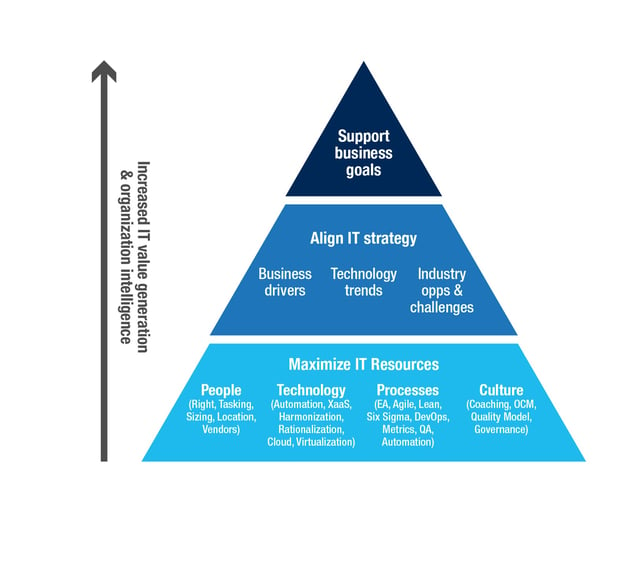How to Create & Maximize Your Business Transformation Strategy

Contributing author: Viviane Martins de Falconi, Directing Partner at FALCONI
We are entering a new age in technology. As we have seen in our daily lives and throughout all industries, we have entered a digital revolution where innovative technologies are reshaping industries and the world around us. Every company is now a software company, since the digital transformation is fueling customer demand for multi-channel, market and customer-facing apps. The power has shifted to the customer, creating what Forrester calls the “Age of the Customer,” where the most successful enterprises will have to reinvent themselves to systematically understand and serve increasingly powerful customers. This business innovation in the digital age requires IT innovation.
Why and how to transform your organization
Business transformation requires a significant effort of change, as the term implies. The reason to start such an engagement is obvious: to achieve a new level of performance and productivity never reached before. But how do you get there? 
A business transformation initiative starts from an organization’s vision and strategy, which signals how ambitious the organization is about its results, market position, and the direction to be followed in the mid or long term. Here, business, sales or operations models can be redefined. With a crystal clear direction, the levels of change for the fundamental pillars of any business can be estimated and planned, with help from a managerial method (like PDCA: Plan-Do-Check-Act).
To start with, there’s no movement without the right people, in the right places, doing the right things. The right people can be mapped through leadership (a single leader or a steering committee) in an assessment, with considerations for the adherence to an organization’s values, technical skills, and their abilities to reach challenging goals. However, it is imperative to check how these goals were set. It is important to note if the MBO (Management by Objectives) structure is based on business gaps and prioritizations, and the alignment of goals are well linked to the organization’s goals. Good goals must move people forward; developing or acquiring new knowledge is what really changes a business’s current results. The structure adjustments should be well communicated throughout the team and should not last long, otherwise the instability will drain people’s feelings of safety and consequently, their productivity. Once the right people are on board, it’s necessary to make sure they are in the right position. That means, adapting the organizational structure to the new business strategy and model, while ensuring the leanest organization possible. This will not only save on expenses, but will also provide a shorter decision flow that speeds up changes and facilitates the communication throughout the organization.
The previous paragraph was dedicated to highlighting people, goals and knowledge, because they are the key success factors for any business. Beyond that, there are more necessary changes and adaptations to transform a business. Technology must be mentioned, because it can influence not only the way the organization’s processes run, but also the way its customers interact with the organization, and this has been changing dramatically during the past years. A technology update or innovation can be very exciting, but let’s not forget about the processes required to put the technology in place and to get the best from it. It’s important to avoid the temptation to let the processes adjust by themselves, or to wait for your team to make all the necessary process changes under their own initiative. Although the “right people” are proactive and creative, if those changes are not planned in advance, the results and the teams can suffer, tremendously. It’s better to avoid all that productivity loss (and the frustration that normally comes with such situation). A good process redesign is strongly recommended to prioritize, prepare, and align the process to the new business model, new organizational structure and to the new technology, making sure the proper managerial and operational controls and standards are established to allow people to be trained and performance to be assessed.
After all, there’s no real business transformation if the mid and long-term results are not transformed.
Learn about how Softtek's business transformation services are helping organizations understand how and why they should innovate their processes, technology platforms, IT organization, sourcing and delivery models to usher in a culture of adaptability, flexibility, innovation, and agility.



